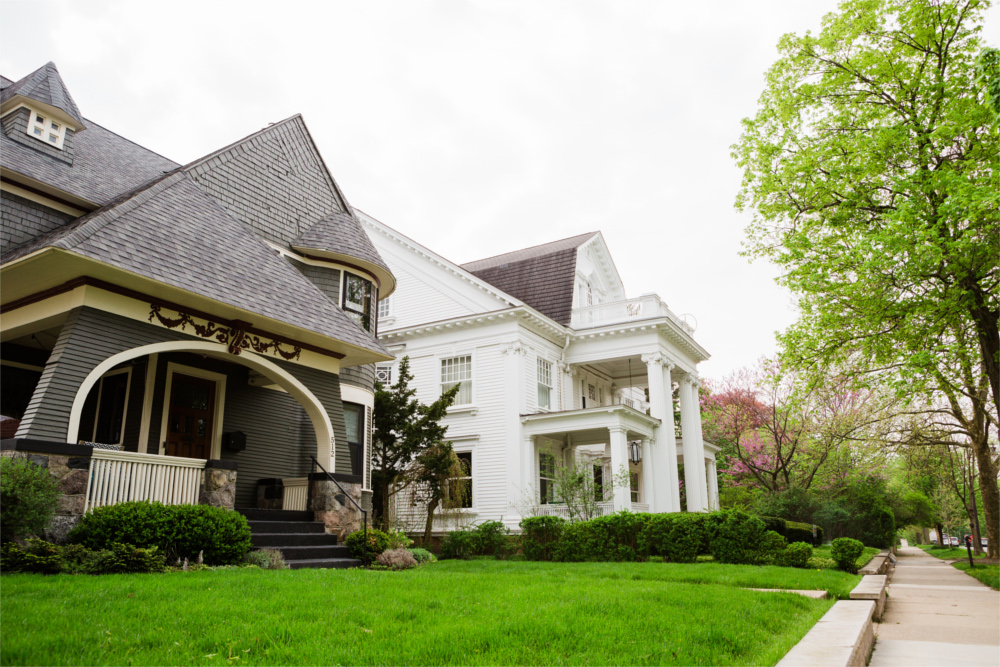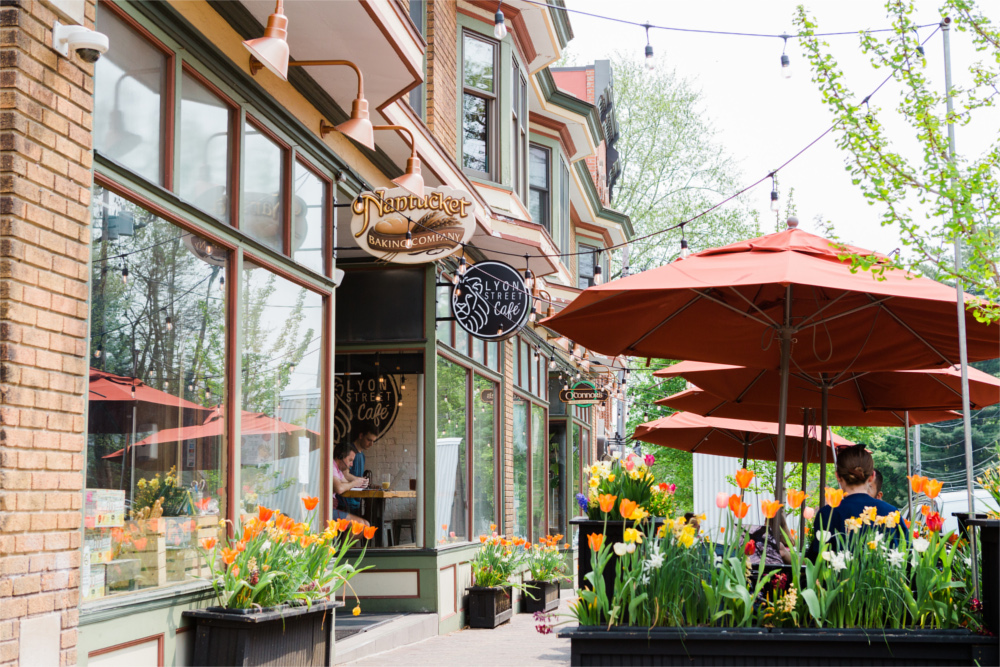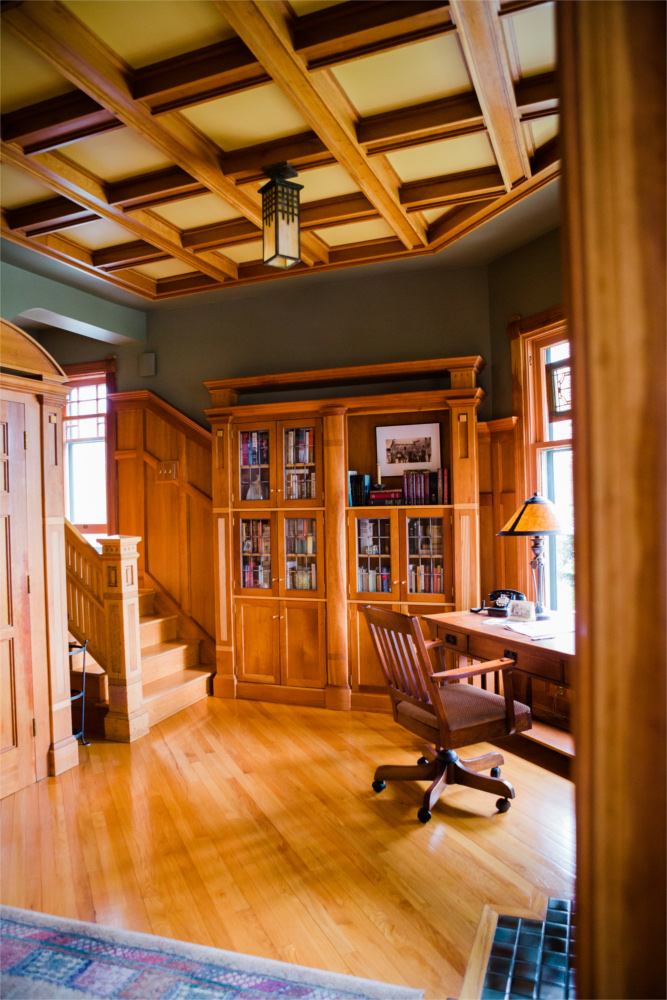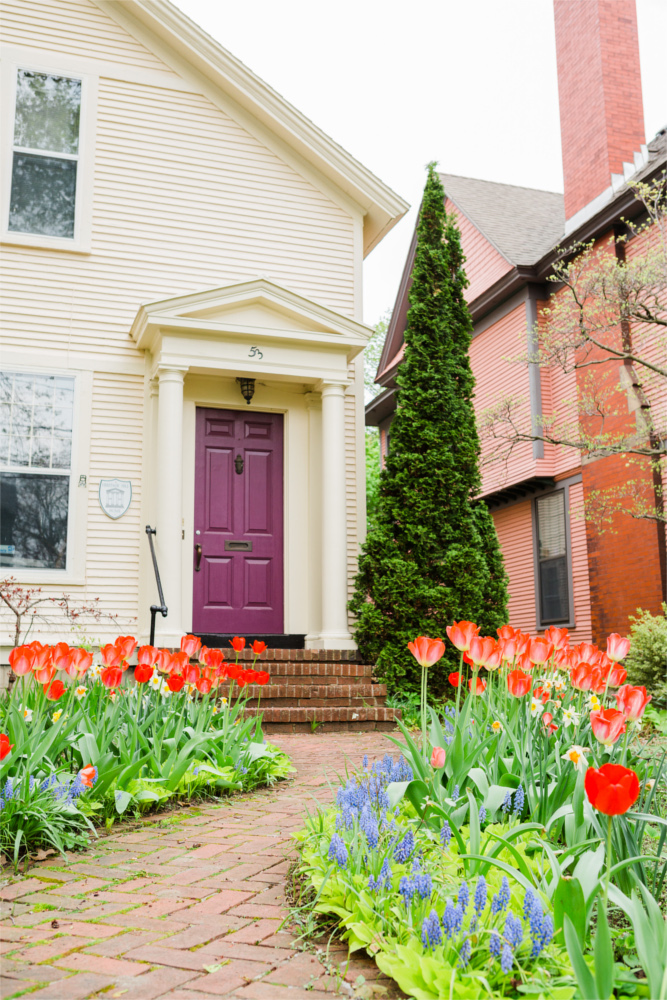Andrew Straatsma said he and his fiancée are among the lucky ones.
They’ve been living in Heritage Hill, the east side downtown historic district, for about three years now. But despite a surge in housing costs around Kent County, their rent still is manageable — only a little more than $1,000 a month for a two-bedroom apartment. They have a good relationship with their landlord, Straatsma said, and an agreement to take care of the property.
But not everyone is so fortunate. Straatsma recalls a neighbor who was driven out of Heritage Hill by monthly rental fees that surged hundreds of dollars in recent years. They’re almost certainly not the first, with rents rising in Kent County by an average of 16.6% since 2019 — among the fastest rates in Michigan.
Now, Straatsma said, he and his fiancée are looking for a home, and they’ve come to realize exactly how competitive the market in Grand Rapids can be — both in Heritage Hill and beyond.
“We’ll put an offer in on (a house) without even looking at it — just because we like the photos. And then we get a response back that it’s already been bought out, cash price, $50,000 over asking, no questions asked, waived inspection,” Straatsma said. “It’s impossible.”
Heritage Hill is a jewel in the city’s architectural crown — a preservation district that lies just east of downtown Grand Rapids, stretching from roughly Michigan Street south past Wealthy Street. On a sunny, spring day it’s a marvel, with cherry blossoms drooping past corniced mansions and towering turrets.
But it’s also a microcosm of Grand Rapids’ bigger housing problem, in which housing costs are rapidly increasing and placing increasing pressure on low-income families in search of a home. Kent County is one of the fastest-growing parts of Michigan — and there’s already a lack of housing supply.
“In the city of Grand Rapids alone, there is a need for 9,000 additional housing units above and beyond all of the housing units that we have in the community today,” said Ryan Kilpatrick, executive director of Housing Next, a West Michigan group focused on housing needs. He points out that, in coming years, Grand Rapids will have to not only address that problem, but continue to build housing for thousands more new arrivals.
Housing costs in Grand Rapids are responding. Federal statistics show that prices in Kent County’s housing market grew an explosive 49% from 2016 through 2021, fueled especially by low pandemic-era interest rates and surging nationwide demand. The jump in prices in 2021 alone appears to have been about 14%.
Straatsma said his sister is soon moving to the area from Cincinnati, and he’s been helping them shop for homes. After taking a look, his sister gives the green light for an offer, but sometimes it’s too late — the house already has sold.
So, despite Straatsma’s hope that he might someday buy a home in Heritage Hill, he’s staying realistic. Yes, the hill at the foot of downtown is easily walkable and bikeable. And it’s just steps away from Martha’s Vineyard, the locally famous gourmet grocer and wine shop, as well as a bakery and a butcher and more.
But the prices make it all but impossible.
“There’s no way we’re ever going to be able to buy a house here,” Straatsma said. “It’s just too competitive.”
Renewal roots
The Heritage Hill Association was formed in 1968, in the midst of urban renewal projects that attempted to remake city centers across the country — many of which had suffered the consequences of white flight or were otherwise in deep urban decay. The group was astonishingly successful in revitalizing the neighborhood, securing a historical preservation designation and saving swaths of it from construction crews.
That story, told in Thomas Logan’s 2004 book, “Almost Lost,” recalls that the group created a foundation to help them flip homes out of deep disrepair. Racist housing policies also made it hard to secure mortgages in the area, so “professionals with good credit standing” would co-sign loans.
But those challenges were decades ago. In the years since, Heritage Hill has been wildly successful, fashioning itself as one of the city’s premier central neighborhoods, filled with history and just steps away from downtown. Its annual tour — inviting excited visitors inside its stately homes — draws thousands each year.
Barbara Draughon is the executive director of the Heritage Hill Association. In late April, she spoke from her office, tucked into the first floor of a modest historic home on College Avenue SE. She’s well aware of the pressures on housing all around the city.
In Heritage Hill, Draughon said, there’s already questions of what comes next. There’s increasing pressure to boost local “accessory dwelling units,” or ADUs, which often are a living space over a garage or in a backyard outbuilding. Those boost housing density, but they also raise questions about parking availability, Draughon said, and the possibility that some could just become short-term vacation rentals. That’s before the question of historical authenticity.
“When I had a performance review with the chairman of the board the last fall, her final question was, ‘What do you think is the biggest issue we’re facing in the next couple years?’” Draughon said. “And I said, ‘Density conversations.’”
But Draughon said Heritage Hill leaders are well aware of the situation, and she mentioned recently meeting with developers about different parts of the district — once about a vacant lot. And she also points out that Heritage Hill, according to one analysis of census data, already is among the most dense neighborhoods in the city.
“Our mission isn’t anti-development or whatever, or to preserve at the expense of everything else,” she said.
A necessary quirk of Heritage Hill is its dedication to historical preservation, which often means local residents need to make expensive investments in the name of keeping up appearances. Bob Mueller lives in a historic home on Union Avenue NE and points out how much cheaper it would be to replace historic siding — which he said requires regular expensive coats of paint — with something more modern.
It’s not unlike the notably higher property tax rates in East Grand Rapids, Mueller said, which can put de facto income restrictions on residents who would like to live there.
That raises questions about who gets to live there. As prices go up, are residents of color being pushed out or denied access?
“We talk about that all the time,” Draughon said. “We’re at the risk of losing (our) diversity as prices go up. We’re having the same conversation that other communities are. We value that in Heritage Hill.”
Market realities
Heritage Hill, of course, is just one example — Grand Rapids has been grappling with a tight citywide housing market for years. Recently, the City Commission passed key zoning changes to help make housing more widely available — loosening the rules on multifamily units and ADUs and creating incentives to build affordable housing.
But it looks increasingly likely that it wasn’t enough.
Mark Brace is the owner of Brace Homes, a real estate firm in the Grand Rapids market. He said the market in 2021 was even tighter than 2020, with less inventory and significant demand. There’s a lot of factors behind all that pressure — from demographics tipping the number of young homebuyers upward to supply chain issues tamping down new construction.
“The real estate market is an 80-mile-an-hour train, and you can get on now or later,” he said. “If you get on now, your interest rate is going to be lower and it’s going to be cheaper.”
Lindsey Reams, the executive director of the Grand Rapids Housing Commission, said only about 40% of participants in the local Housing Choice Voucher Program find housing after six months.
“I think the national average is above 80% (voucher) success rate for housing,” Reams said. “I wouldn’t say that this is just Grand Rapids, because I’m actually at a state conference right now with other housing agencies throughout the state. And some of them have success rates lower than 40%.”
Grand Rapids’ high housing costs also come as national housing costs soar, buoyed by a nationwide phenomenon of cheap credit and high pandemic demand. A New York Times analysis shows that American homeowners have realized $6 trillion in housing equity growth during the last two years. That’s good news for some — but for renters and others left behind, it means ballooning costs to buy into the market and the risk that many will find it out of reach.
Connie Bohatch, the managing director of community services for Grand Rapids, said it’s affordable housing that’s a “real pain point” for the city right now.
“We get calls all the time about (how) folks can’t find someplace they can afford to rent, or a home to buy,” she said. “We want housing at all price points though, right?”
Kyle VanStrien is the head of the Grand Rapids Planning Commission. He said he’s closely watching as other cities grapple with their own housing costs, places like in Minneapolis, where the City Council voted to end single-family zoning in 2018 in favor of building denser housing citywide.
“I think we’ve seen the cost of housing rise all over the country. And it’s not just in cities that look like Grand Rapids. It’s in most cities,” VanStrien said. “I think there are some cities that are taking some really proactive approaches to helping to address the issue. I think the jury’s still out on how effective those methods will be.”
The city has a “master plan” document to steer the future of the city’s urban planning — a sprawling document that covers land use, future development and more.
But it’s two decades behind many of the challenges that now are facing the city. The housing supply crunch, for example, is far further along now than it was in 2001, with a roughly 74% increase in housing costs over the last two decades (and a roughly 95% increase since housing prices hit post-recession lows in the early 2010s). And the 2020 census data shows Ottawa and Kent counties saw the first- and third-highest growth rates, respectively, in the state over the prior decade.
Now, city leaders are in the midst of a new planning process, meant to chart out what comes next for Grand Rapids. That’s been in a “pre-planning” phase since early 2020, but soon will move into a “community input phase” this year, as the city hires a consultant to help lead the process. A mayor-appointed steering committee of four dozen members is expected to help guide the process toward adoption in early 2024.
For many observers, one of the obvious answers is Grand Rapids has to become denser — which means single-family lots subdivided into apartments, high-rises and more.
“I think that density is one part of a solution. I don’t think that it’s the silver bullet by any stretch,” VanStrien said. “But I think, you know, locating density in appropriate locations makes a lot of sense.”
Kilpatrick said some of the “most significant tools” for future housing market management include development in major commercial areas and roadways.
“Now, this is also going to be important across the region, right?” he said. “So Grand Rapids is one component of the broader West Michigan region and the housing markets across each community are tied to one another. So, this isn’t necessary in Grand Rapids alone, but frankly, in each of our communities in West Michigan.”
This story can be found in the May/June 2022 issue of Grand Rapids Magazine. To get more stories like this delivered to your mailbox, subscribe here.











Facebook Comments